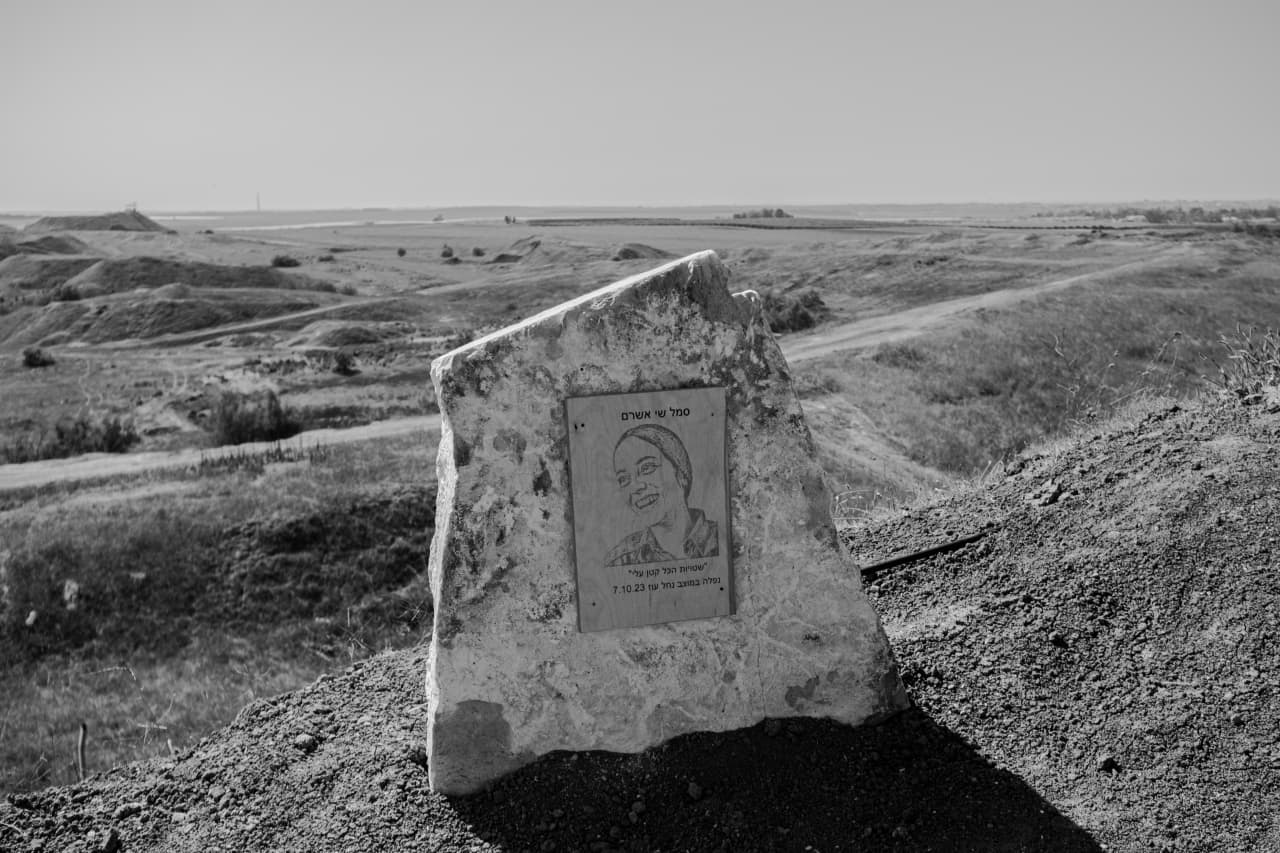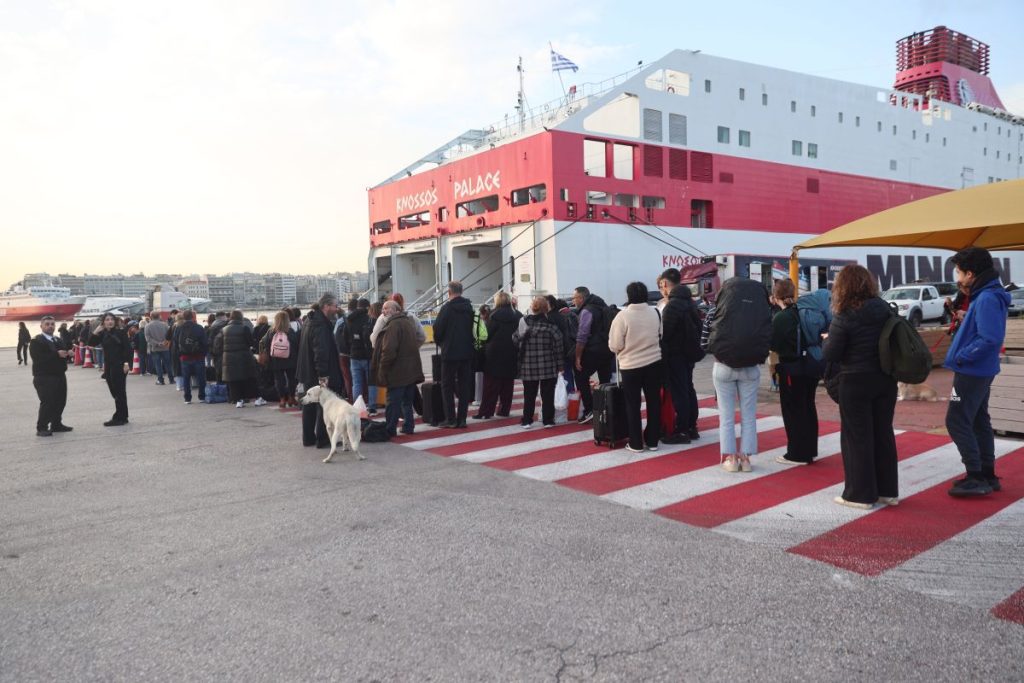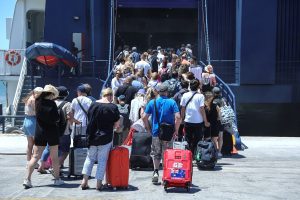NAHAL OZ BASE, Israel—It was about 6:30 a.m. on Oct. 7 when dozens of heavily armed men burst into view on Maya Desiatnik’s video screen. The Israeli soldiers, charged with monitoring a stretch of the Gaza frontier, picked up the radio at her side and raised the alarm.
“There is a Turkish knight!” she said, using the Israeli military code word for an incursion into Israeli territory. Palestinian militants were breaching the border.
For months, Desiatnik, now 20 years old, and her colleagues in the observer unit, all of them young women, had warned their superiors repeatedly—and with increasing vehemence—that the Islamist militant group Hamas seemed to be preparing a major attack . Their concerns were dismissed.
Now, they were watching as their fears became reality, playing out on video screens in the observers’ situation room. The women issued urgent warnings to troops in the field. When more than 150 militants swarmed their base, about half a mile from Gaza, they started frantically calling for help.
None came. In the end, around 50 soldiers at the Nahal Oz base, including 15 observers, were shot or burned to death by militants. Seven observers were kidnapped and taken as hostages to Gaza.
The failure of Israel’s security establishment to heed the warnings of the observers who served, unarmed, at Nahal Oz and its inability to protect them have turned the women into a potent symbol of the country’s intelligence and military failures on Oct. 7.
A year later, the deadly attack, which killed 1,200 and saw some 250 taken hostage, is still fresh in Israel, roiling politics and stirring grief and anger. The war that has followed has killed more than 44,000 Palestinians and each day seems to pull more of the Mideast into its violent spiral.
Dozens of Israelis remain in militants’ hands. Tens of thousands of Israelis are living as displaced people after fleeing their homes in the country’s north, where they face rocket attacks, or in communities near Gaza.
Parents of the women slain or kidnapped at Nahal Oz feel angry and betrayed, and are demanding accountability from the government and the military. “We need to speak the truth, even if it hurts,” said Eyal Eshel, whose daughter, Roni, died at Nahal Oz.
The Wall Street Journal interviewed more than two dozen survivors of the attack on the base, as well as forensic scientists, families of the killed or kidnapped soldiers, and military officials, and reviewed photos of the aftermath.
Months of warnings
The observers at Nahal Oz, in the desert 50 miles south of Tel Aviv, were part of a specialized, all-female soldiers whose job was to keep watchful eyes on Israel’s border areas.
Theirs was a demanding job. The women worked in shifts to constantly monitor screens with video feeds from the borders at all times, 24/7. If they needed to eat or go to the bathroom, other soldiers had to take their place. Suspicious activity was reported by telephone to soldiers near the border.
At Nahal Oz, the months before Oct. 7 were full of suspicious activity. Former observers said crowds of Palestinians, some armed, would show up regularly—for stretches almost daily—at the border fence, setting tires on fire, blocking camera views and sometimes attempting to breach the barrier.
Roni Lifshitz, 21, who served as an observer at Nahal Oz but was away at a different base on Oct. 7, said that at one point she saw around 10 pickup trucks with some 20 militants near the fence. They were dressed in black, their faces covered, marking them as members of Hamas’s armed wing.
“They pointed at spots on the fence and where our lookouts are,” she said. “I alerted my command,” she said. She said she had no idea whether her superiors acted on the information or passed it on.
Omer Keinan, now 21 , another observer from the base, said that a few months before the attack she saw what appeared to be a Hamas training exercise inside Gaza that included practice taking prisoners.
“I saw them simulate everything. They would run and then crawl,” Keinan said. “We would alert about everything.”
Many observers shared their concerns at the time with their parents, in text messages reviewed by the Journal, and told them they believed a war or operation was coming soon.
In a recording of a phone call a month before Oct. 7, Roni Eshel told her mother that incidents at the fence were increasing, and that she would have to spend more weekends on the base.
“It’s not good,” she said, according to a recording shared with the Journal by her father. “We don’t know when we will be able to come home.”
Yael Kochavi, 20, a noncommissioned officer who was tasked with overseeing the observers’ work, compiled daily intelligence reports for her superiors at the end of each shift with photos and video of unusual events. This report was then sent to an intelligence officer and up to the brigade commander, she said.
The pace of irregular events two weeks before the attack was the highest she had seen during more than a year and a half of service. She called intelligence staffers during these two weeks. She said they told her not to worry. She didn’t escalate the situation further because she said she trusted them.
The ignored warnings became a subject of gallows humor. “We always used to joke about whose shift the raid would fall on,” said Roni Lifshitz. “It was a repeating joke in the situation room.”
Current and former intelligence officials said that in recent years the military had tended to view observers more like security guards, and instead focused on other, higher-tech intelligence sources such as classified signals intelligence from Israel’s elite 8200 unit.
The warnings of observers typically weren’t passed up high in the military’s chain of command and to the intelligence community, they said.
The young women, however, took their jobs seriously. The shared sense of duty and stress made for strong bonds.
The observers at Nahal Oz kept each other’s spirits high by cooking together, planning meals and parties, and spending time together on weekends. One TikTok video from before Oct. 7 shows the women dancing and lip syncing to songs and pulling pranks on each other.
The attack
When sirens started blaring and Hamas launched barrages of rockets at 6:29 a.m. on Oct. 7, nine observers who weren’t on duty in the situation room ran into a base bomb shelter, which had a dirt floor and concrete walls. Many were still in their pajamas.
In a video taken by Daniela Gilboa, which she sent from the shelter to her boyfriend that morning, the women can be seen huddled inside as they speak to each other in fear. Explosions can be heard around them.
“It’s escalating! Shahaf, it’s escalating!” one calls out in a terrified voice to a friend, Shahaf Nisani, who is crouching in a corner.
Soon, militants swarmed the desert base, which is about 280 yards long and 160 yards wide, with rows of barracks and other buildings encircled by a fence. Some combat soldiers who were there fought back, but many were quickly killed.
Koby Levy, 23, a combat medic, said he began to hear guns firing at around 6:45 a.m. He spent the ensuing hours fighting militants armed with grenades and Kalashnikovs, he said.
“They just kept coming,” said Levy, who, faced with overwhelming numbers of militants, said he hid behind a bush near some trash cans.
Inside the bomb shelter, women started to send their parents messages saying goodbye.
“I don’t know what’s going to happen, but I love you guys,” one of the observers, Noa Price, texted her mother at 7:30 a.m. through another observer’s phone, as the militants began to close in.
Shahaf Nisani sent her father a selfie of herself hiding in the shelter with another friend around the same time. “Take care of mom and everyone if I don’t make it out of this,” she wrote him.
Militants tossed grenades into the shelter, wounding some. A few combat soldiers with weapons who had come to shelter from rockets with the observers attempted to fight off the invaders, but were killed. The Hamas militants entered and began shooting.
A video, taken by a Hamas militant that morning and later recovered by Israeli soldiers, showed the aftermath: seven young women, bloodied but still alive, tied up against the shelter wall in front of the dead bodies of seven of their friends.
Those women—including Daniela Gilboa, who had messaged her boyfriend earlier—would later be forced into pickup trucks and taken into Gaza, where she is believed to still be alive as a hostage.
Among those who were dead was Shahaf Nisani, a curly haired soldier who was serving her last weekend on the base before completing military service. She had prepared a festive meal for all of the observers on the base the night before and handpicked parting gifts for each of her friends.
Over in the situation room, which was supposed to be the safest place on the base, the observers stayed at their posts until they got orders to hide in an adjoining commander’s office, a bit farther away from where the militants were trying to enter the building.
They spent the next few hours trying to calm each other down, even making occasional jokes, according to Desiatnik.
A handful of armed soldiers who were on hand tried to fight off the militants, but the attackers set the area on fire, making it hard to breathe, Desiatnik said.
She heard a voice calling her to climb out through a bathroom window, even though there were still militants outside. The window was so small that she got stuck before another soldier pulled her through.
For the next 40 minutes, Desiatnik hid behind concrete barricades near the situation-room window with several soldiers who had also escaped in hope other observers would climb out, but no one came. When the heat and smoke became unbearable, they moved to another hiding spot until reinforcements arrived hours later.
Levy, the combat medic, said he was first able to assess the totality of damage to the base when he was rescued by arriving Israeli troops around 4 p.m. The base was littered with bodies. Cars and buildings were either burned or on fire, he said. The air smelled of wood, asphalt, plastic and corpses.
“I saw the situation room completely burned down,” he said. “It was clear what happened.”
A master sergeant who arrived at Nahal Oz on Oct. 8 to recover bodies warned his soldiers not to look at the faces since they could be someone they knew. Many of the bodies he saw had gunshots wounds to the torso.
One photo he took, viewed by the Journal, showed the burned body of a young woman lying on the remains of a mattress. Another young woman was found dead behind a bench, wearing Mickey Mouse pajamas.
Some bodies were little more than bones turned white from the high temperatures, and would take weeks to identify.
When first responders from an Israeli rescue organization asked a mother, Anat Glass, if she wanted to know the details about her daughter’s death, she turned them down.
“I don’t know what I buried,” she said.
Searching for the truth
In the weeks after Oct. 7, when Eyal Eshel’s daughter, Roni, was still classified as missing, he became frustrated by a lack of answers from authorities about what happened. He started his own investigation, speaking to survivors, military officials and anyone else he could track down.
It took 34 days for authorities to identify his daughter, Roni, in a forensic lab where anthropologists sifted through crowns, teeth and what little else remained of the young women on duty that day. Forensics specialists said their bodies had been incinerated at crematorium-level temperatures.
Families discovered that the young women didn’t have fire extinguishers in the situation room, and that the ones who were on duty were alive until at least around 11:30 a.m., when some parents received calls. They could have been saved if rescuers had come in time, Eshel and other parents say.
Survivors said they had never prepared for a base-invasion scenario, so they didn’t know what to do.
Other information that emerged after Oct. 7 point to broader intelligence failures. The Israeli military discovered detailed Hamas maps of several bases after the attack. Some videos of militants breaching the Nahal Oz base and kidnapping soldiers were used as propaganda on Hamas Telegram groups.
Officials missed danger signs, such as videos published on social media by Hamas before Oct. 7 that showed it conducting training exercises. The Israeli military and its vaunted intelligence units had for years put most of their resources toward the country’s northern border, and especially Hezbollah, which was seen as a more serious threat than Hamas, according to an Israeli security official.
Despite the Israeli attorney general’s insistence that a state commission of inquiry be launched, one hasn’t taken place. Prime Minister Benjamin Netanyahu has said investigations should take place only after the war ends. Some allege that he wants to delay unflattering findings.
The prime minister’s office declined to comment.
The military is currently conducting its own probe into what took place at Nahal Oz to study its performance and draw lessons for the future and has promised to make the findings public.
But parents want a broader, independent state investigation to study wider failures associated with Oct. 7, with the authority to find individuals responsible for mistakes and recommend that such people can’t continue serving in positions of power.
Past state commissions of inquiry, including one after Israel’s 1973 Yom Kippur War, led to public outcries and major changes in policy.
For survivors, the attack remains an open wound.
One of the seven kidnapped women was rescued by Israeli forces in Gaza. The body of another was found and brought home. The five others were seen alive, though wounded, by hostages who were freed in November’s cease-fire deal.
More than 10 months later, families are worried about their chances of survival. Negotiations between Israel and Hamas to reach a hostage swap for a cease-fire deal have collapsed in recent months.
Sigal Price, whose daughter, Noa, died, stopped working and relives Oct. 7 every Saturday morning when she wakes up trying to imagine her daughter’s last moments. “Both the government and the military have to give us answers on how such a disaster took place,” she said.
Anat Glass is devastated by the loss of her daughter, Yam, and finds it hard to leave the house; she paints to feel closer to her and stay calm. Eyal Eshel stays focused on the state commission of inquiry. In September, he visited the charred remains of the Nahal Oz situation room, which still has melted telephones and keyboards. The smell of smoke was present in the air.
Insisting on a full investigation, he said, allows him to act as his daughter’s voice, since hers was taken away. “I am not driven by rage,” he said. “I demand justice.”
Write to Anat Peled at anat.peled@wsj.com



